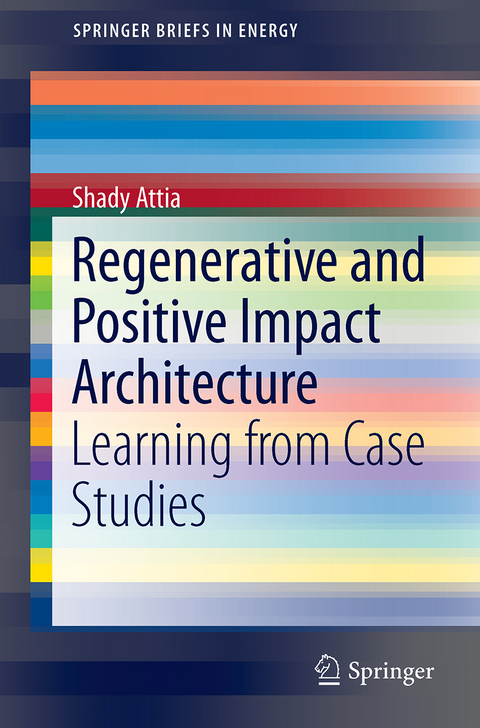
Regenerative and Positive Impact Architecture
Springer International Publishing (Verlag)
978-3-319-66717-1 (ISBN)
Prof. Shady Attia is an architectural engineer and professor of sustainable architecture and building technology at the University of Liège in Belgium. He is a faculty member of the United States Green Building Council specializing in high-performance buildings, including net zero energy buildings and regenerative design. As an independent consultant and LEED (Leadership in Energy and Environmental Design)-accredited professional, he has worked with several governments on building efficiency programs, and with private building design and energy consulting companies in the areas of building energy efficiency, green building certification and sustainability decision support.
1.Introduction.- 2.Modern History of Sustainable Architecture.- 3.Definitions and Paradigm Shift.- 4.Indicators and Metrics of Regenerative Design.- 5.Case Study 1 (energy efficiency paradigm).- 6.Case Study 2 (regenerative paradigm).- 7.Performance Comparison and Quantification.- 8.Regenerative and Positive Impact Architecture Roadmap.
| Erscheinungsdatum | 11.10.2017 |
|---|---|
| Reihe/Serie | SpringerBriefs in Energy |
| Zusatzinfo | XIX, 94 p. 29 illus., 26 illus. in color. |
| Verlagsort | Cham |
| Sprache | englisch |
| Maße | 155 x 235 mm |
| Gewicht | 188 g |
| Themenwelt | Naturwissenschaften ► Biologie ► Ökologie / Naturschutz |
| Technik ► Architektur | |
| Technik ► Bauwesen | |
| Technik ► Elektrotechnik / Energietechnik | |
| Schlagworte | Building construction & materials • Building Construction and Design • Building construction & materials • Building Physics, HVAC • Carbon Efficiency • civil engineering, surveying & building • Civil engineering, surveying & building • Climate Change Management • Climate Change Management and Policy • Embodied energy • Energy • Energy technology & engineering • Energy technology & engineering • Environmentally-friendly ('green') architecture & • Environmentally-friendly ('green') architecture & • green buildings • Heating, lighting, ventilation • Life Cycle Assessment • sustainability • Sustainable Architecture/Green Buildings • sustainable development • The Environment • Zero-Impact Buildings |
| ISBN-10 | 3-319-66717-3 / 3319667173 |
| ISBN-13 | 978-3-319-66717-1 / 9783319667171 |
| Zustand | Neuware |
| Informationen gemäß Produktsicherheitsverordnung (GPSR) | |
| Haben Sie eine Frage zum Produkt? |
aus dem Bereich


